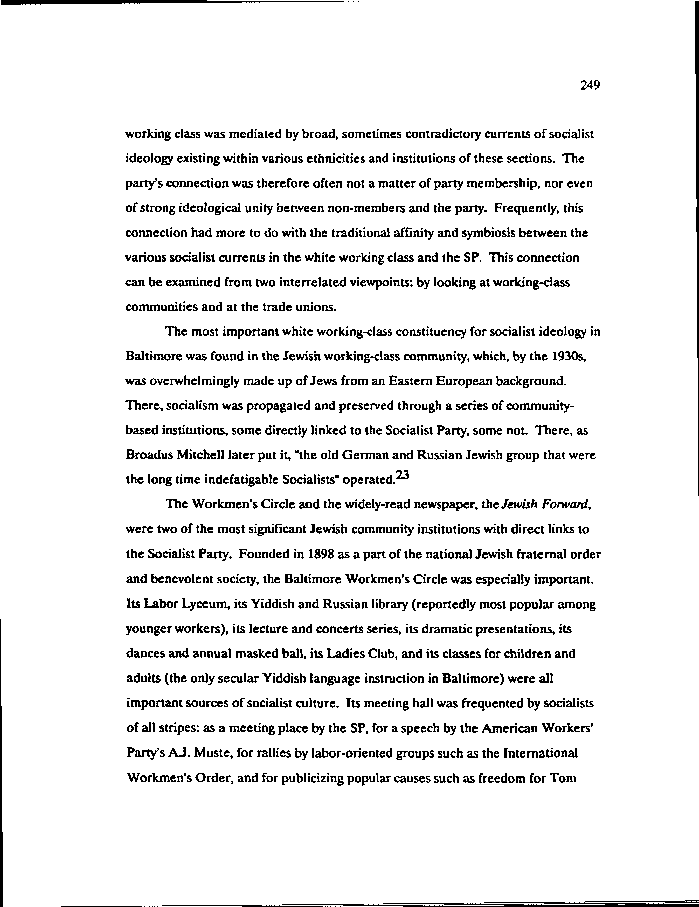|
249
working class was mediated by broad, sometimes contradictory currents of socialist
ideology existing within various ethnicities and institutions of these sections. The
party's connection was therefore often not a matter of party membership, nor even
of strong ideological unity between non-members and the party. Frequently, this
connection had more to do with the traditional affinity and symbiosis between the
various socialist currents in the white working class and the SP. This connection
can be examined from two interrelated viewpoints: by looking at working-class
communities and at the trade unions.
The most important white working-class constituency for socialist ideology in
Baltimore was found in the Jewish working-class community, which, by the 1930s,
was overwhelmingly made up of Jews from an Eastern European background.
There, socialism was propagated and preserved through a series of community-
based institutions, some directly linked to the Socialist Party, some not. There, as
Broadus Mitchell later put it, "the old German and Russian Jewish group that were
the long time indefatigable Socialists" operated.^
The Workmen's Circle and the widely-read newspaper, the Jewish Forward,
were two of the most significant Jewish community institutions with direct links to
the Socialist Party. Founded in 1898 as a part of the national Jewish fraternal order
and benevolent society, the Baltimore Workmen's Circle was especially important.
Its Labor Lyceum, its Yiddish and Russian library (reportedly most popular among
younger workers), its lecture and concerts series, its dramatic presentations, its
dances and annual masked ball, its Ladies Club, and its classes for children and
adults (the only secular Yiddish language instruction in Baltimore) were all
important sources of socialist culture. Its meeting hall was frequented by socialists
of all stripes: as a meeting place by the SP, for a speech by the American Workers'
Party's AJ. Muste, for rallies by labor-oriented groups such as the International
Workmen's Order, and for publicizing popular causes such as freedom for Tom
|

